Railway Continuous Prestressed Concrete Bridge Design in Ballastless Track Turnout Zones
Abstract
:1. Introduction
2. Ballastless Track Turnout Layout Theory
2.1. Turnouts and Bridge Configuration
2.1.1. Avoid the Bridge Expansion Joint on Ballastless Track Turnout Zone
- (1)
- Bridge fixed point and movable support of simple span or multi-span bridge.
- (2)
- The distance between two adjacent bridges of bridge fixed points. In short, a complex bridge type can be simplified to a simple beam model to determine the bridge expansion length L. The decision of a simple beam model depends on the main bridge structure subjected to axial deformation of temperature change. According to bridge axial deformation restraints, decide the fixed bearing positions and movable bearing positions, shown in Figure 2.
2.1.2. Avoid Configuring Continuous Long-Span Bridges
2.2. Effect of Temperature Difference between Bridge and Track System
- (1)
- Proper configuration of bridge supports and bridge spans.
- (2)
- Inspection of fixed support of bridge while continuous welded rails produce maximum longitudinal force.
- (3)
- Inspection of track buckling stability at maximum temperature.
- (4)
- Inspection of track fractured opening at minimum temperature.
- (5)
- The setting up requirements of rail expansion joints or protective device.
3. Continuous Prestressed Concrete Bridge Design in Ballastless Track Turnout Zone
3.1. Configuration of the Continuous Prestressed Concrete Bridges
3.1.1. Bridge Expansion Joint Setting, the Turnout Layout Requirements
3.1.2. Multi-Span Continuous Bridge Structural Design
- Hinged plate A size: 690 cm × 20 cm
- Steel reinforcement configuration: [email protected] cm
- Steel reinforcement quantity: 216 bars
- Steel reinforcement allowed tension stress = As * 0.4 * Fv = 216 * 2.87 * 0.4 * 4.2 = 1041.46 t
- Neglect concrete cracking tension.
- Hinged plate A resistance axis force safety factor (SF) = 1041.47/622.66 = 1.67
4. Conclusions
Acknowledgments
Author Contributions
Conflicts of Interest
References
- The Taipei Rapid Transit System. Metro Rail Engineering Practice; The Taipei Rapid Transit System: Taipei, Taiwan, 2006. [Google Scholar]
- Huang, M.-R. Railway Engineering in the New Century; Wen Sheng Bookstore: Taipei, Taiwan, 2005. [Google Scholar]
- Huang, M.-R. Basics of Railway Engineering in the New Century; Wen Sheng Bookstore: Taipei, Taiwan, 2007. [Google Scholar]
- The Ministry of Communications. 1067 mm Gauge Railway Laying and Maintenance of Continuous Welded Rail Specifications; The Ministry of Communications: Taipei, Taiwan, 2006.
- The Ministry of Communications. Maintenance Standard 1067 mm Gauge Railway Bridges and Tunnel; The Ministry of Communications: Taipei, Taiwan, 2002.
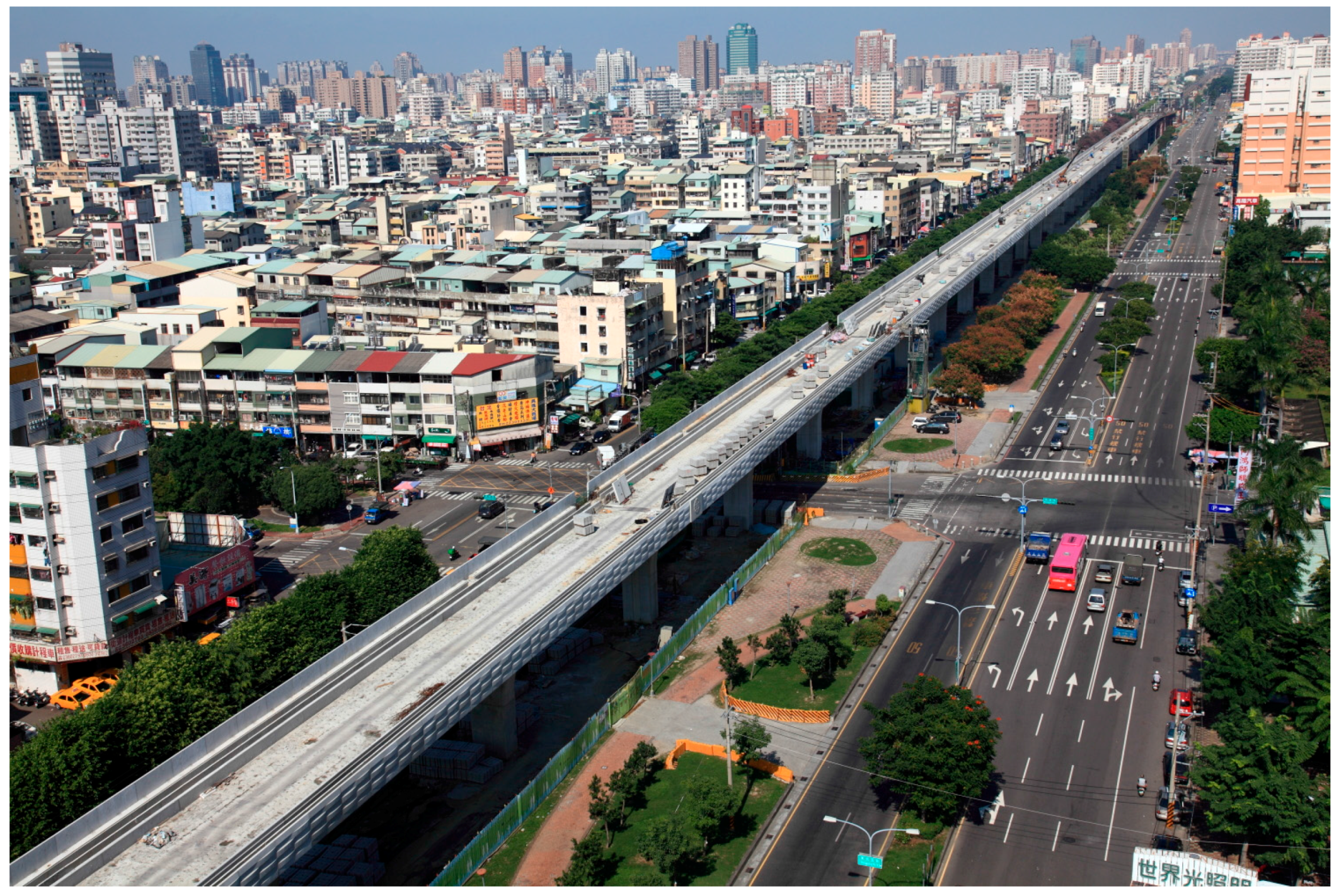
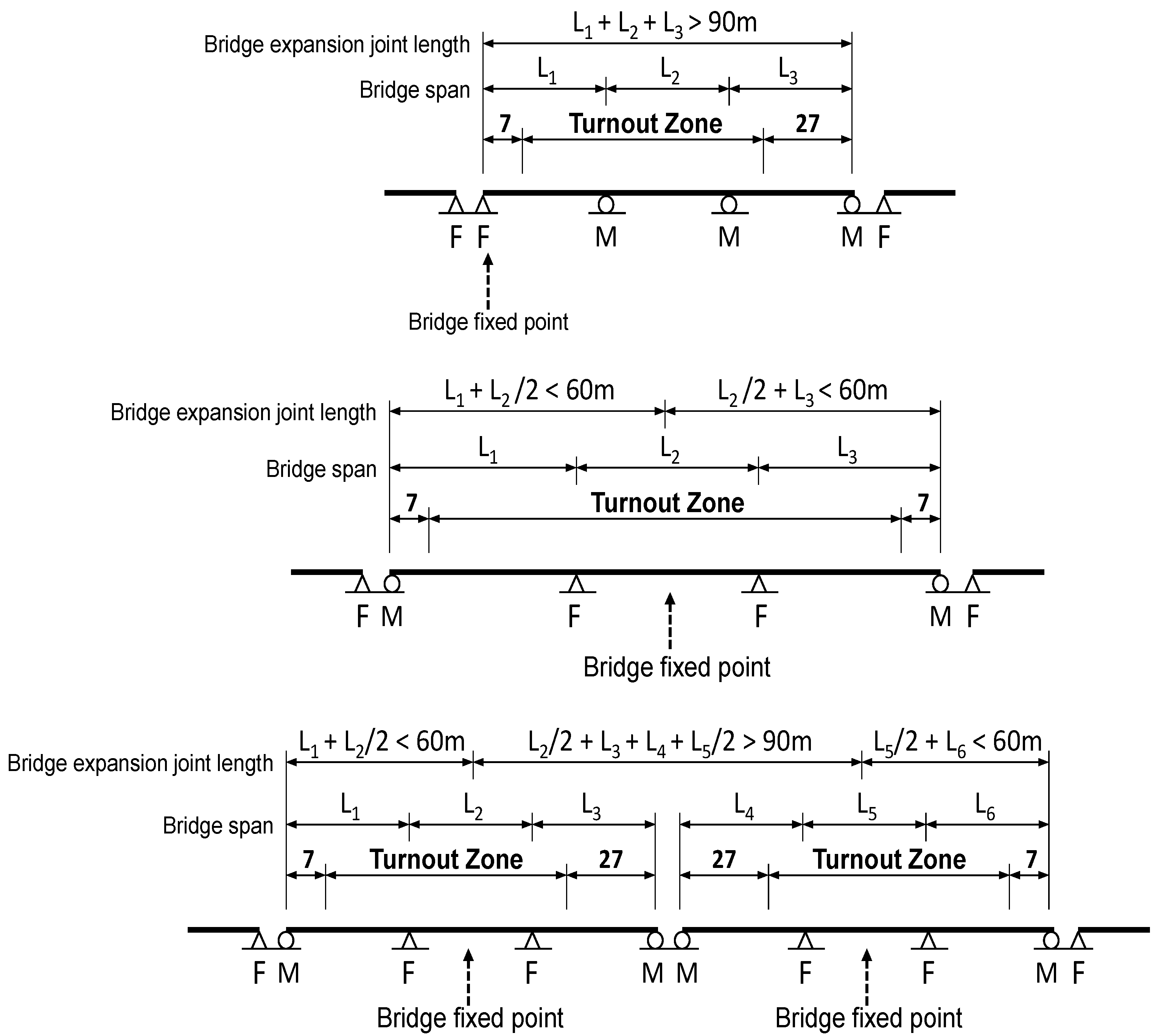
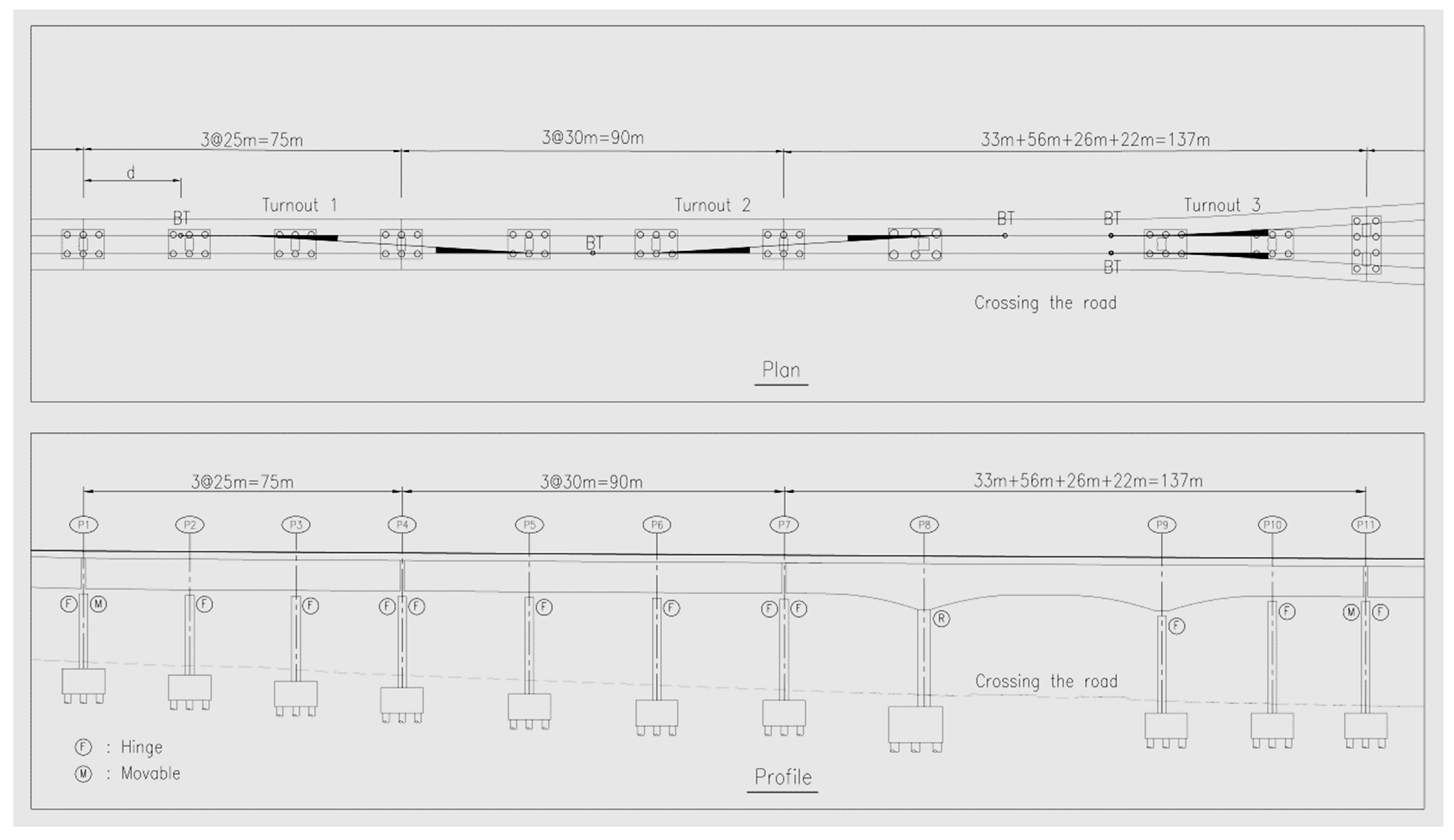


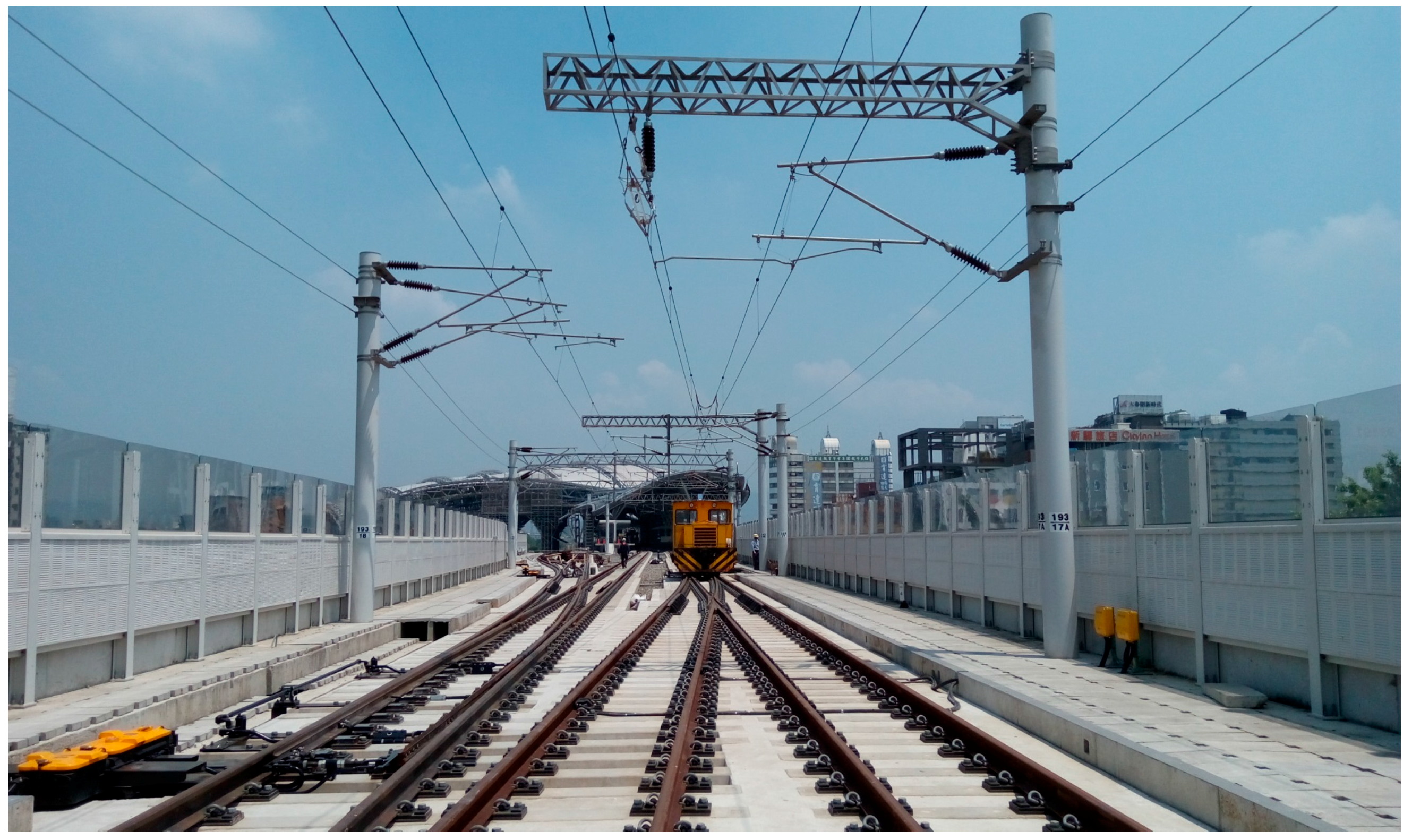
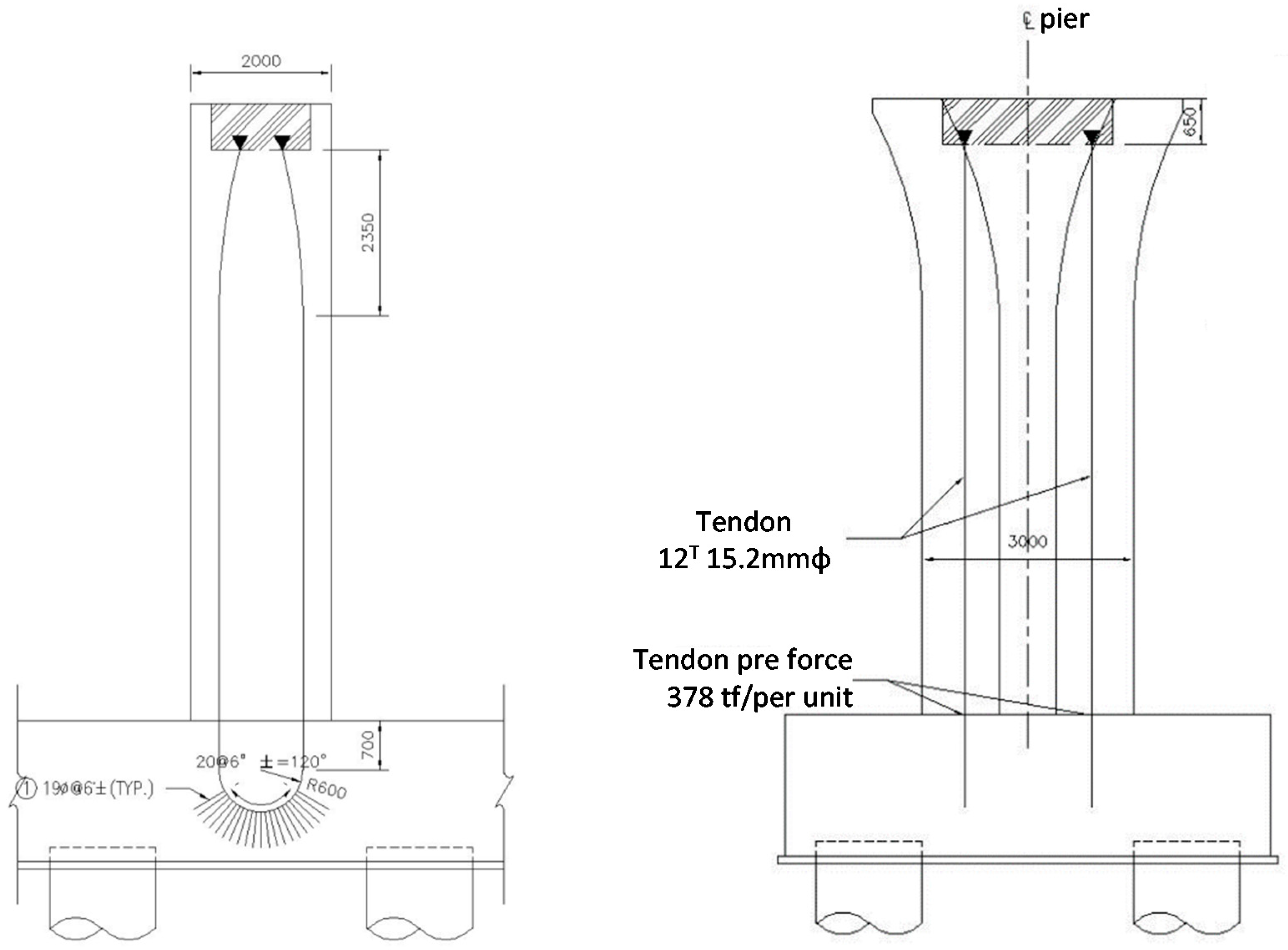
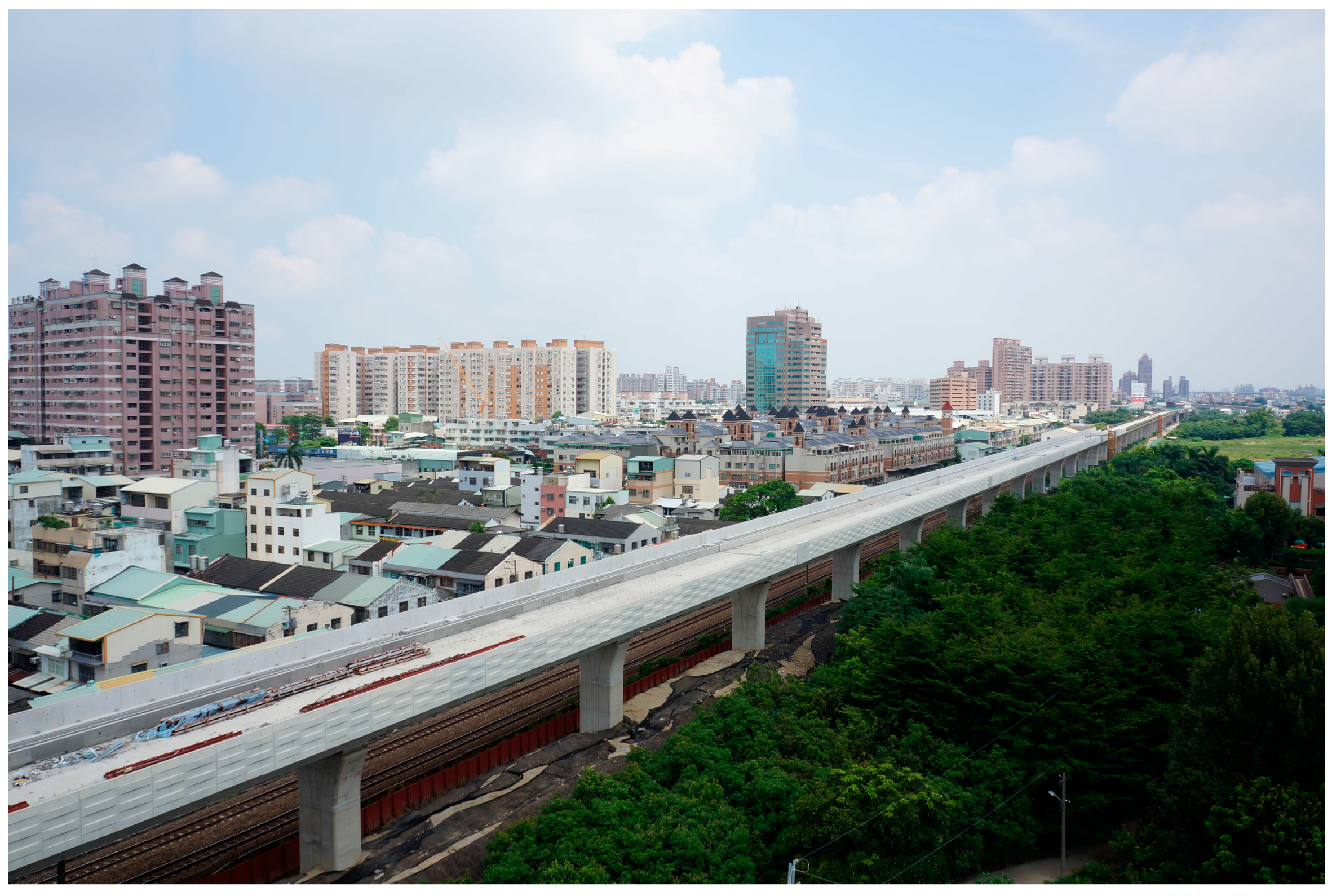
| L ≤ 60 m | d ≥ 7 m |
| 60 m < L ≤ 90 m | d ≥ 17 m |
| 90 m < L | d ≥ 27 m |
| Factors Affecting the Hinge Plate Main Load | 365 Days | 3000 Days | Accumulated |
|---|---|---|---|
| Axial Force (t) | Axial Force (t) | Axial Force (t) | |
| Temperature | 0.00 | 315.78 | 315.78 |
| Creep | 0.00 | 174.75 | 174.75 |
| Shrinkage | 0.00 | 132.13 | 132.13 |
| Summation | 622.66 |
© 2017 by the authors. Licensee MDPI, Basel, Switzerland. This article is an open access article distributed under the terms and conditions of the Creative Commons Attribution (CC BY) license (http://creativecommons.org/licenses/by/4.0/).
Share and Cite
Hsu, W.-K.; Shih, N.-H.; Lee, Y.-L. Railway Continuous Prestressed Concrete Bridge Design in Ballastless Track Turnout Zones. Technologies 2017, 5, 11. https://doi.org/10.3390/technologies5020011
Hsu W-K, Shih N-H, Lee Y-L. Railway Continuous Prestressed Concrete Bridge Design in Ballastless Track Turnout Zones. Technologies. 2017; 5(2):11. https://doi.org/10.3390/technologies5020011
Chicago/Turabian StyleHsu, Wen-Kuei, Neng-Hao Shih, and Yu-Lin Lee. 2017. "Railway Continuous Prestressed Concrete Bridge Design in Ballastless Track Turnout Zones" Technologies 5, no. 2: 11. https://doi.org/10.3390/technologies5020011







